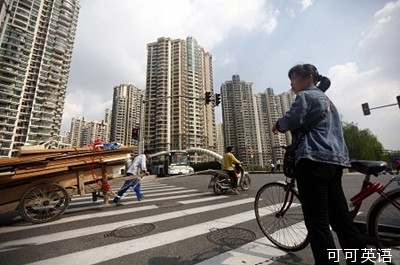For the first time, more people now live in cities than the countryside—a trend of increasing urbanization that is expected to continue.
有史以来第一次,住在城市的人口数量超过乡村——这是日益增长的城市化趋势,且城市化还有望持续。
Based on data from thousands of cities on everything from number of patents generated to road lengths, researchers at the Santa Fe Institute have uncovered the math by which human settlements grow from town to city to metropolis. So, for example, a social network between people within the city grows in a mathematical relationship with the increase in the size and quality of infrastructure, such as roads, power lines and the like.

根据从上千所城市得来的各种数据(从专利申请的数量到道路长度),圣塔菲研究所的研究人员发现了从乡镇到城市到大都市人口数量的递增的数学规律。例如城里人之间的社会网络的递增与城市基础设施的规模和品质的递增呈正比。
In essence, the bigger the city, the greater the opportunities—but negatives or costs also rise, such as crime or traffic congestion. To optimize urban function, the research suggests following policies that allow for a denser web of human connections while minimizing the costs imposed by transportation and energy use.
本质上,城市规模越大,机会就越多——但负面作用或成本也随之上升,例如犯罪事件和交通。为了优化城市功能,研究人员提出了以下政策:在最小化交通和能源成本的同时,加强建设更紧密的人际关系网。
The real test of these ideas will be how they stack up against data from the burgeoning cities of the developing world. China alone has added hundreds of cities with millions of people in the last few decades—and wants to add yet more. To do it right, city planners will need to brush up on their math.
对这些观点真正的考验在于他们如何与来自发展中国家新兴城市的数据相较量。在过去几十年里,仅在中国就新增了数百个人口超过百万的城市,还会有更多的城市加入。为了采用正确的方法,城市规划者需要温习他们的数学了。













